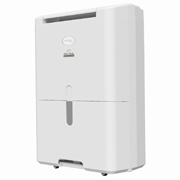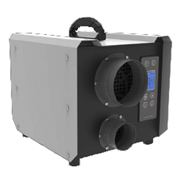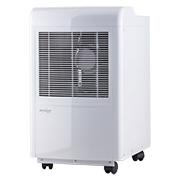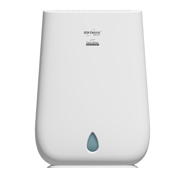PM2.5納入國家環(huán)境空氣標準
來(lái)自:美國政府環(huán)保署官方網(wǎng)站
微粒物質(zhì),又成為PM, 是包括空氣里的固體粒子和在空氣里的水份。PM的形成是由許多人為的因素或大自然自己散發(fā)出來(lái)的,也有污染物與空氣產(chǎn)生相互反應而產(chǎn)生。這些固體或液體的物質(zhì)是以各種各樣的不同體積而存在。
當微粒小于10微米的直徑時(shí),就會(huì )被通過(guò)呼吸,吸進(jìn)人體和積聚在人的呼吸系統,從而影響人體的健康。對于微粒小于2.5微米,就被稱(chēng)為細小微粒,這些微粒對人體健康影響是最大的。因為它小于平均人類(lèi)頭發(fā)7份1的體積,很容易被藏在人的肺部深處。
健康研究數據表明,人的過(guò)早死亡與接觸細小微粒有非常明顯的關(guān)系。另外一個(gè)重要的因果關(guān)系就是加重呼吸系統和心血管系統疾病(具體體現在增加到醫院看病住院的人數,增加急診看病人數,造成曠工和曠課,減少室外運動(dòng)的天數);肺部疾病,降低肺部功能;哮喘病發(fā)作;和一些心血管病,例如突發(fā)性心臟病,心率失常。對微粒特別敏感的人群包括:老年人,有心臟病和肺部疾病的患者,和兒童。
微粒的來(lái)源包括各種各樣的燃燒過(guò)程(例如汽車(chē)發(fā)動(dòng)機,發(fā)電廠(chǎng),燃燒木頭等等),和一些工廠(chǎng)加工過(guò)程。微粒在2.5和10之間被稱(chēng)為粗加工的產(chǎn)物,其來(lái)源包括研磨加工,還有包括道路上產(chǎn)生的塵埃。
在1997年,美國環(huán)保署就首次制定了年度,和24小時(shí)國家環(huán)境空氣質(zhì)量標準來(lái)監測PM2.5。在2006年,美國環(huán)保署修訂了24小時(shí)監控PM2.5的條例。有關(guān)更多的信息和相關(guān)的實(shí)施措施在政府環(huán)保署網(wǎng)站公布于眾。
The term "particulate matter" (PM) includes both solid particles and liquid droplets found in air. Many manmade and natural sources emit PM directly or emit other pollutants that react in the atmosphere to form PM. These solid and liquid particles come in a wide range of sizes.
Particles less than 10 micrometers in diameter (PM10) pose a health concern because they can be inhaled into and accumulate in the respiratory system. Particles less than 2.5 micrometers in diameter (PM2.5) are referred to as "fine" particles and are believed to pose the largest health risks. Because of their small size (less than one-seventh the average width of a human hair), fine particles can lodge deeply into the lungs.
Health studies have shown a significant association between exposure to fine particles and premature mortality. Other important effects include aggravation of respiratory and cardiovascular disease (as indicated by increased hospital admissions, emergency room visits, absences from school or work, and restricted activity days), lung disease, decreased lung function, asthma attacks, and certain cardiovascular problems such as heart attacks and cardiac arrhythmia. Individuals particularly sensitive to fine particle exposure include older adults, people with heart and lung disease, and children.
Sources of fine particles include all types of combustion activities (motor vehicles, power plants, wood burning, etc.) and certain industrial processes. Particles with diameters between 2.5 and 10 micrometers are referred to as "coarse." Sources of coarse particles include crushing or grinding operations, and dust from paved or unpaved roads.
In 1997, EPA established annual and 24-hour NAAQS for PM2.5 for the first time. In 2006, EPA revised the 24-hour NAAQS for PM2.5. Additional information on these standards and related implementation activities is provided here.
森井牌高效專(zhuān)業(yè)凈化器系列均具備醫療級別HEPA能有效過(guò)濾直徑為0.3微米(頭發(fā)直徑的1/200)以上的微粒去除效率可達到99.99%以上。





